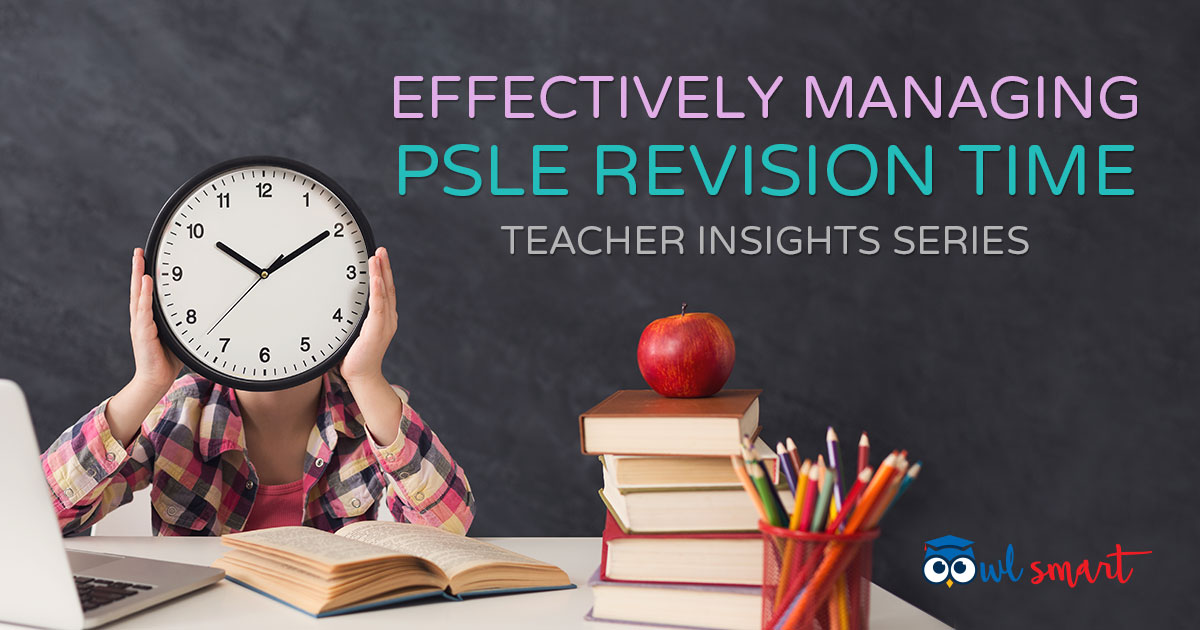
This article is the seventh in a series of 10 articles that will look into some of the most commonly asked questions by parents.
A lot of primary school students are as busy as working adults. Other than preparing for PSLE, many of them also have other commitments outside school hours. For example, learning swimming, musical instruments, tuition and so on.
Read on to find out how you should plan a study schedule together with your child in order to manage the revision time more effectively.

Question 7: How many hours should my child spend on revising for PSLE? He already has so much other work to do!
Teacher Chin
I think as parents, we have to instil in our children, the habit of establishing a daily routine that first, ensures the completion of daily learning tasks and secondly, focuses on a specific learning gap.
We should also encourage them to keep clear daily records of areas and tasks completed. This allows them to be more effective in planning future tasks.
I observed that an average Primary 6 student spends about 2 hours beyond the classroom in the completion of school work and PSLE revision.
I feel what is more important is that the child makes progress. This can be observed from the confidence and manner in which the child approaches his or her learning.
The child’s subject teachers should be the first source of information on a child’s progress and we should not wait till the teacher-parent meeting to find out.
Teacher Zen
There is no fixed magical number that your child should spend revising for PSLE daily. Every child is different, has different entry level or ability and endurance limit.
I know of students who can spend up to 4 hours or more a day revising for exam or on a daily basis. There are also students who spend 1 hour or less revising a day.
You know your child the best and how much he/she can absorb or learn. More importantly, plan a schedule that he/she is comfortable and agree with so that she/he can follow the schedule consistently.
To start off, the revision schedule can be shorter and then gradually increase so that your child can adapt to the intensity.
Set a routine so that revision time becomes part and parcel of daily lives.
Remember to pitch the learning task according to your child’s ability. Increase the difficulty level gradually. If he/she is weak in Math for example, there is no point forcing him/her to do many 4-marks to 5-marks questions.
Focus on the fundamentals in 1-mark to 3-marks questions instead. The number of hours spent revising varies depending on what your child is revising on.
The golden rule is quality learning produces better results than quantity learning.
Try to prioritise on the tasks that need to be done a day. If the child is already not coping well with studies and still has to attend many enrichment classes in piano, swimming or CCA, etc, perhaps it is time to take your child out of some activities first.
Conclusion
Every child is different. Know your child’s limits and establish a daily routine that he is capable of completing.
What is important here is not the number of hours spent, but that the child really learns effectively.
Frequent conversation with the teachers and child himself is necessary to know if the child is coping well with his workload.
About the Author
Prof Ollie is a guru of PSLE revision strategies specialising in the Leitner System and aims to help primary 6 students from all walks of life to excel in their PSLE. Despite being a professor, he wears his graduation hat wherever he goes. When not working on OwlSmart, Prof Ollie flies around Pulau Ubin to lose weight and catch up with the resident hornbills.



